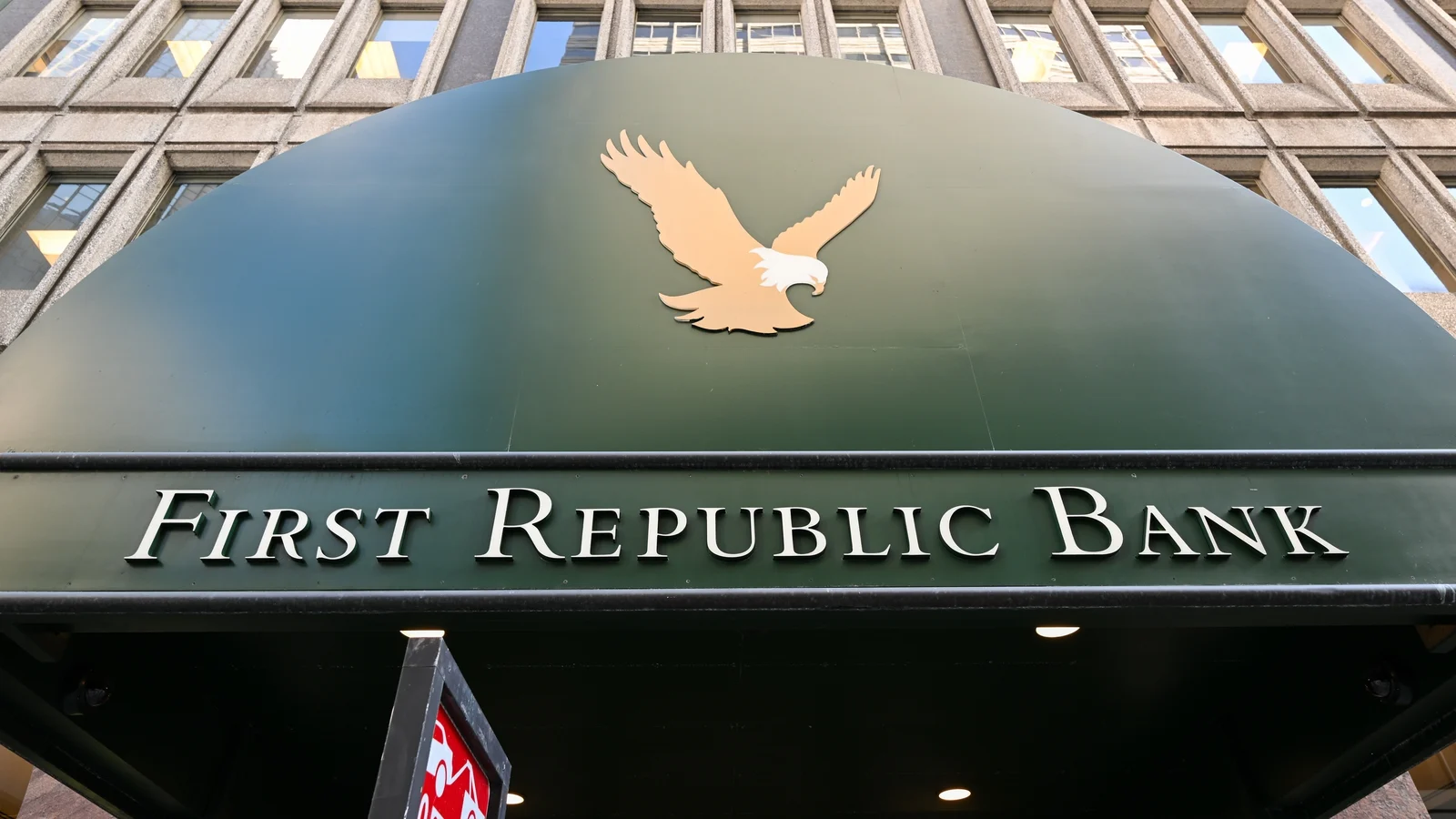The nation’s biggest banks provided First Republic (FRC) with $30 billion in uninsured deposits at a time when the regional lender desperately needed the infusion. Six weeks later, they are reluctant to ride to the rescue again.
The embattled San Francisco lender is trying to persuade JPMorgan Chase (JPM), Bank of America (BAC) and other giant financial institutions to help First Republic survive another crisis of confidence. One option is to purchase some of its underwater bonds at above-market rates. That means big banks would absorb the losses.
What would they get in exchange? Equity warrants, possibly – and the knowledge that they rehabilitated one of the country’s largest regional lenders. First Republic, which primarily serves wealthy customers on the East and West coasts, was the 14th-largest US bank as of Dec. 31.
First Republic’s advisers are arguing this deal would save the banks some money, in the end. They get to keep their $30 billion in deposits while the troubled assets recover value over time.
What’s more, any initial losses they absorb would be less than what banks might have to pay if regulators were to seize First Republic. The FDIC recoups the costs of resolving such failures via a levy charged to banks, according to a formula tied to their performance.
This argument, however, is not yet winning over these giant institutions. Some worry they could end up subsidizing First Republic’s survival only to see it get seized by regulators and then sold to a single rival.
“A lot of that doesn’t make financial sense,” said one person who is familiar with the banks’ view of the situation.
Few options
First Republic’s situation turned more serious Monday after it disclosed a loss of more than $100 billion in deposits in March. The drop was greater than expected and raised new concerns about the company’s chances for survival. The company said it was considering “strategic options.”
Investors punished the stock, sending it down nearly 50% in one day and then nearly 30% on Wednesday, briefly dragging its market value below $1 billion. On Thursday it rose nearly 9%.
The reluctance of banks to play the role of rescuer for a second time leaves First Republic with few options. It hopes the US government will help with a solution by bringing the banks to the table. A White House spokesperson told reporters Thursday that the Biden administration it is continuing to monitor the situation at First Republic, and that the administration would take action if needed.
“There is an open bank path solution here,” said a person familiar with First Republic’s view of the situation, “but it’s a matter of the government needing to convene to bring all the parties together to make it happen.”
The big banks are also waiting for the government to intervene and some bank executives say a seizure is increasingly likely.
One bank executive put the chance of a government-supported, bank-aided solution at 30% and FDIC receivership at 70%.
It’s also possible, another bank executive said, that nothing happens and First Republic “meanders along” as it tries to turn things around on its own.
“Often times the big banks…are viewed as the answer,” this person said, “but there’s only so much that we can be the answer for.”
If regulators were to seize First Republic, they face the tricky question of how to treat the uninsured deposits provided by the nation’s biggest banks.
If they agree to protect them by designating the failure of First Republic as a systemic risk, regulators could be accused of providing a big-bank bailout. If they don’t, they can be accused of not providing the same support given last month to uninsured depositors at Silicon Valley Bank and Signature Bank.
But before taking any action, the government will be looking to the big banks to present a “viable option,” said financial consultant John Popeo, a former attorney with the FDIC. “The government isn’t driven by stock prices.”

